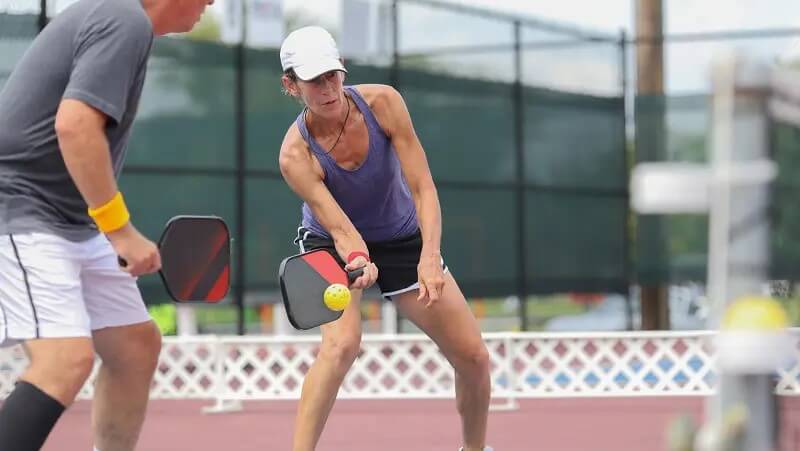by Jenny Foster
When starting at the back of the court, the biggest challenge for pickleball players is getting to the ball at the right moment. This goal can be properly achieve with the use of the split-step.
So what is the split step?
The split step is the little hop the a pickleball player does from the back of the court as they head forward and make their way to the non-volley zone line. With the split step, pickleball players can properly prepare themselves to return the incoming ball while in the transition zone. All pickleball players, instead of just standing at the back of the court, should master this movement because it will definitely get them to the non-volley zone line.
The split step is especially important for the serving team, because the server will initially be positioned at the back of the court. After serving, the server should head toward the front with a split step, using the movement to gradually reach the non-volley zone line while being constantly ready to hit the ball coming from the opponent’s court.
In a typical pickleball game, a player must use one or several split steps before they can reach the non-volley zone. Obviously, although they can sprint straight ahead, but this would rob them of the opportunity to properly position themselves before hitting the ball.

The split step is applied not only while moving through the transition zone but also when performing every kind of pickleball shot. The hop can be a small or large one, with the ultimate aim of maximizing the distance covered as the player makes their way to the non-volley zone.
An important thing about the split step is stopping after the hop but also being ready to move immediately after hitting the ball. Correspondingly, the body is leaned a little forward and in athletic stance to ensure quick and responsive movements during the split step. In addition, the knees should be bent and the legs spread wider than the shoulder, and the weight of the body should be balanced and supported by the balls of the feet. Furthermore, the player should anticipate the ball from a low position, which should give them enough allowance to hit the pickleball properly.
Next, timing is another factor contributing to a successful split step. Players should start with their split before their opponent has hit the pickleball. In this way, their feet would reach the ground just after the ball has been hit by their opponent, giving them sufficient time to execute their next shot. Meanwhile, when facing offensive opponents, pickleball players can make their split step at an earlier time point. On the other hand, when the opponents are on the defensive mode, one can move forward several steps before making the split step after the opponent has hit the ball.
To improve on their spit step, pickleball players may engage in transition drills, where a pickleball is fed to a player, who will then try to make their way to the non-volley zone line with a split step. Finally, pickleball players can train using different scenarios to further familiarize themselves with the split step. If they master this movement, it will greatly benefit their game and surely increase their chances of winning a point inside the court.
